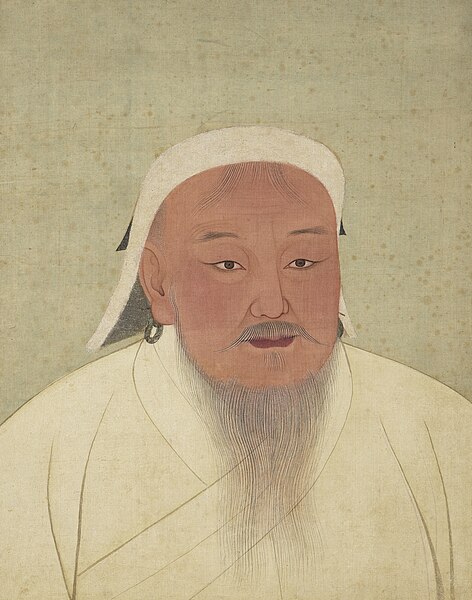Ögedei Khan was the second ruler of the Mongol Empire. The third son of Genghis Khan, he continued the expansion of the empire that his father had begun.
Portrayal of Ögedei Khan in a 14th-century Yuan-era album, originally painted in 1278 (National Palace Museum, Taipei)
Statue of Ögedei Khan in Sükhbaatar Square, Ulaanbaatar. Together with Kublai Khan's, and the much larger Genghis Khan's statues, it forms a statue complex dedicated to the Mongol Empire.
Coronation of Ögedei in 1229, by Rashid al-Din, early 14th century
Detail of miniature from the Illustrated Chronicle of Ivan the Terrible depicting the Mongols capturing a city (16th century)
The Mongol Empire of the 13th and 14th centuries was the largest contiguous empire in history. Originating in present-day Mongolia in East Asia, the Mongol Empire at its height stretched from the Sea of Japan to parts of Eastern Europe, extending northward into parts of the Arctic; eastward and southward into parts of the Indian subcontinent, attempted invasions of Southeast Asia, and conquered the Iranian Plateau; and westward as far as the Levant and the Carpathian Mountains.
Mongol tribes during the Khitan Liao dynasty (907–1125)
The Old World on the eve of the Mongol invasions, c. 1200
Genghis Khan, National Palace Museum in Taipei, Taiwan
Genghis Khan ascended the throne in the Ikh Khuraldai region in the Onan river, from the Jami' al-tawarikh.








